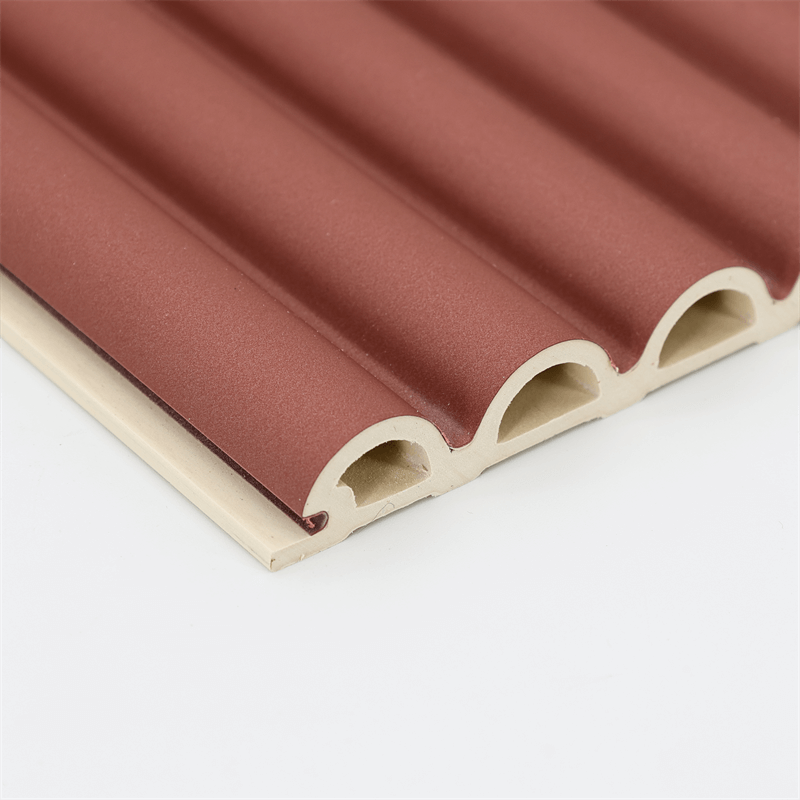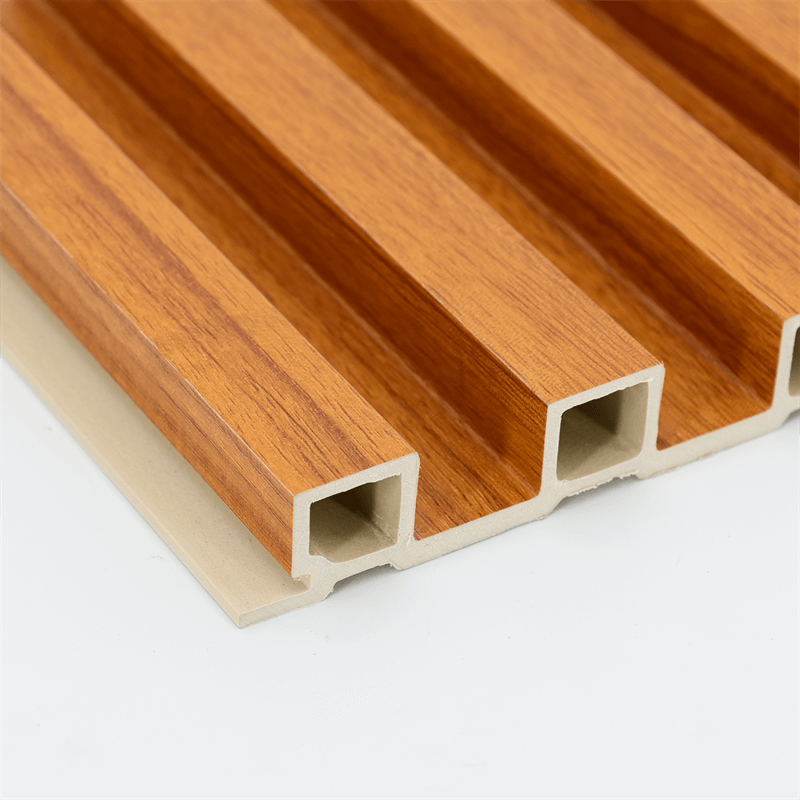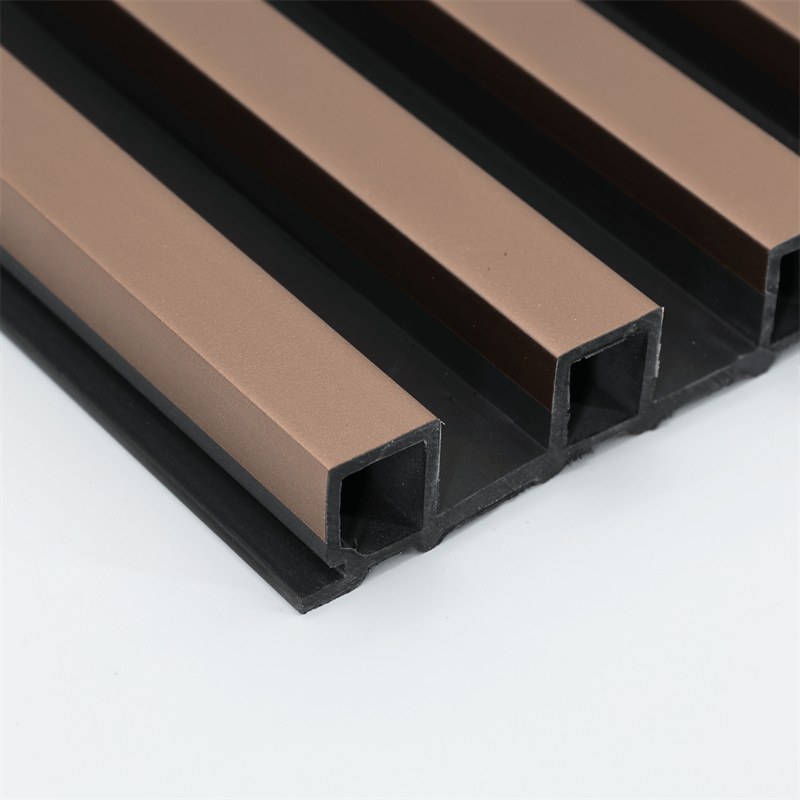In the world of interior design and construction, wall coverings play a vital role in enhancing the aesthetics and functionality of a space.
Over the years, various materials have been used as wall coverings, ranging from traditional options like paint, wallpaper, and wood paneling to more modern alternatives such as WPC (Wood-Plastic Composite) wall panels.
This essay explores the debate between WPC wall panels and traditional wall coverings, comparing their characteristics, benefits, drawbacks, and overall suitability for different applications.
I. Understanding WPC Wall Panels:
WPC wall panels are a relatively new addition to the realm of wall coverings.
They are made from a combination of wood fibers and thermoplastics, typically using recycled materials.
WPC panels offer several advantages over traditional wall coverings, making them an attractive option for many homeowners and designers.
- Durability and Longevity: WPC wall panels are renowned for their exceptional durability. The combination of wood fibers and thermoplastics results in a material that is resistant to rot, decay, and insect damage. Unlike traditional wall coverings that may wear and fade over time, WPC panels retain their appearance and structural integrity for years, requiring minimal maintenance.
- Moisture Resistance: One of the significant benefits of WPC wall panels is their high resistance to moisture. Unlike wood paneling or wallpaper that can be susceptible to warping, swelling, or mold growth in damp environments, WPC panels are engineered to withstand moisture, making them ideal for areas like bathrooms, kitchens, and basements.
- Design Flexibility: WPC wall panels offer a wide range of design options. They can mimic the appearance of natural materials like wood or stone, providing a luxurious and aesthetically pleasing look. Additionally, WPC panels come in various colors, patterns, and textures, allowing for versatility and customization to match any interior style or design concept.
II. Exploring Traditional Wall Coverings:
Traditional wall coverings have been in use for centuries and continue to be popular in many homes and commercial spaces.
Let’s examine some of the characteristics and considerations associated with these traditional options.
- Paint: Paint is a versatile and cost-effective option for wall coverings. It offers a vast array of colors and finishes, allowing for creativity and customization. However, paint may require frequent touch-ups and is more prone to damage from scratches or impacts compared to other wall coverings.
- Wallpaper: Wallpaper adds depth, texture, and patterns to a space, creating a unique visual impact. It can be an excellent choice for creating a specific ambiance or style. However, wallpaper installation can be time-consuming, and it may require professional expertise for optimal results. Additionally, certain wallpapers may not be moisture-resistant and can be challenging to remove or replace.
- Wood Paneling: Wood paneling provides a classic and timeless aesthetic. It adds warmth and natural beauty to a room, making it a popular choice for traditional and rustic designs. However, wood paneling requires regular maintenance, including staining or sealing, to preserve its appearance and protect against moisture damage.
III. Comparing the Advantages and Disadvantages:
Now let’s compare the advantages and disadvantages of WPC wall panels and traditional wall coverings to determine their suitability for different applications.
- Installation and Maintenance: WPC wall panels are relatively easy to install, often utilizing a tongue-and-groove system for seamless interlocking. They require minimal maintenance, typically limited to occasional cleaning. In contrast, traditional wall coverings like wallpaper or wood paneling may require professional installation and more frequent upkeep to retain their appearance.
- Durability and Longevity: WPC wall panels excel in terms of durability, as they are resistant to moisture, rot, and insect damage. They maintain their structural integrity over time, making them a reliable choice for long-lasting wall coverings. Traditional wall coverings may vary in durability depending on the material used, with paint being susceptible to wear and tear, and wallpaper or wood paneling being more vulnerable to moisture or physical damage.
- Design Options and Customization: WPC wall panels offer a wide range of design options, with the ability to mimic natural materials and a variety of colors, patterns, and textures. Traditional wall coverings also provide design versatility, with paint offering an extensive color palette and wallpaper showcasing intricate patterns. Wood paneling, on the other hand, adds a unique natural charm. The choice between WPC panels and traditional wall coverings depends on the desired style and ambiance of the space.
IV. Selecting the Right Option:
The decision between WPC wall panels and traditional wall coverings ultimately depends on the specific requirements and preferences of each project.
Consider the following factors when choosing the appropriate option:
- Application and Environment: If the wall covering will be exposed to moisture or humidity, such as in bathrooms or kitchens, WPC panels are a superior choice due to their resistance to water damage. In drier environments, traditional wall coverings like paint or wallpaper can be suitable.
- Design and Aesthetic: Consider the desired design concept and the visual impact you want to achieve. WPC panels can provide a modern, elegant look, while traditional wall coverings offer a wide range of styles, from classic to contemporary. Match the wall covering to the overall theme of the space to create a cohesive and pleasing environment.
- Maintenance and Longevity: Evaluate the maintenance requirements and longevity expectations. If low maintenance and long-term durability are crucial factors, WPC wall panels offer significant advantages. However, if you are willing to invest time and effort into periodic upkeep, traditional wall coverings can also provide satisfactory results.
The debate between WPC wall panels and traditional wall coverings is a matter of balancing the specific needs, design preferences, and functional requirements of each project.
While WPC panels offer exceptional durability, moisture resistance, and design versatility, traditional options like paint, wallpaper, and wood paneling continue to hold their place in interior design, providing unique aesthetics and charm.
By carefully considering the characteristics, benefits, and drawbacks of each option, one can make an informed decision that best suits the intended application and desired outcome.
In conclusion, both WPC wall panels and traditional wall coverings have their own merits and considerations.
The choice between the two depends on factors such as the application environment, design preferences, maintenance requirements, and longevity expectations.
WPC wall panels excel in terms of durability, moisture resistance, and ease of installation.

They offer a wide range of design options, allowing for customization and versatility.
Their ability to withstand moisture makes them particularly suitable for areas prone to dampness or humidity. Additionally, their long-lasting nature reduces the need for frequent maintenance and replacements.
On the other hand, traditional wall coverings like paint, wallpaper, and wood paneling have stood the test of time and continue to be popular choices.
They provide a diverse range of styles, textures, and patterns that can enhance the aesthetics of a space.
Traditional options offer flexibility in terms of customization, allowing for unique and personalized designs. However, they may require more maintenance and upkeep compared to WPC panels.
Ultimately, the decision between WPC wall panels and traditional wall coverings depends on the specific requirements and preferences of each project.
It is essential to carefully evaluate factors such as the application environment, desired design aesthetic, and long-term maintenance considerations.
Consulting with professionals in the field can also provide valuable insights and guidance in making the right choice.
In conclusion, both WPC wall panels and traditional wall coverings have their own strengths and weaknesses.
By considering the specific needs of the project and weighing the advantages and disadvantages of each option, one can select the most suitable wall covering that meets the functional and aesthetic requirements of the space.
Whether it’s the modern durability of WPC panels or the timeless charm of traditional wall coverings, both options contribute to creating visually appealing and functional interiors.


